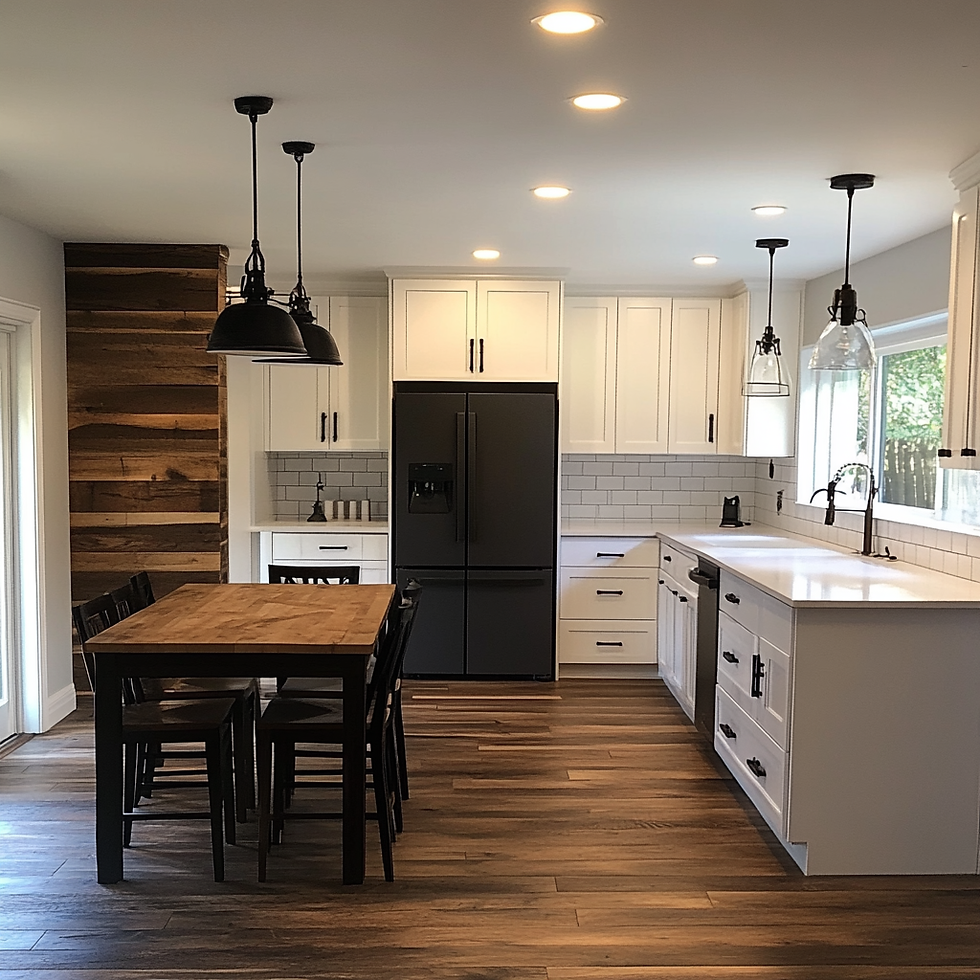Understanding the Full Timeline of a Home Renovation Project
- supremeprojectsroo
- Jun 18
- 4 min read

Renovating a home is a journey filled with excitement, anticipation, and often a fair share of uncertainty. When managed properly, it transforms a living space into a personalized sanctuary, increasing comfort and potentially property value. To navigate this complex process smoothly, understanding the full scope and timeline of a renovation project is essential. This article serves as an in-depth guide for homeowners, offering a detailed breakdown of each stage, realistic timeframes, and expert insights into the nuances of remodeling a home.
Planning and Design: The Bedrock of Renovation Success
Every successful renovation begins with detailed planning. This phase, often underestimated, lays the groundwork for everything to come. Homeowners collaborate with architects or interior designers to define goals, draw up blueprints, and finalize the scope of work. Selecting materials, comparing cost estimates, and obtaining permits are all integral parts of this stage.
Typically, planning and design take anywhere from two to four weeks, but this can extend based on the complexity of the project and delays in decision-making or approvals. Budgeting is another critical aspect, and homeowners should account for a 10-20% buffer to cover unexpected expenses.
Interesting Fact: According to the National Association of Home Builders, over 30% of renovation projects exceed their initial budget due to unforeseen structural issues or changes in design mid-project.
Pre-Construction: Clearing the Way
Once planning is complete, the pre-construction phase kicks off. This includes site preparation, which involves clearing the space, protecting unaffected areas, and organizing logistics for workers and materials. If demolition is required, this occurs during this stage.
Demolition timelines vary, but generally last one to two weeks. During this time, contractors also take precautions to manage dust, debris, and potential hazards. Safe disposal of materials, particularly those containing lead or asbestos, is essential and may add extra days to the schedule.
Structural and Framing Work: Building the Backbone
After the space has been cleared, contractors focus on structural changes and framing. This can include adding or removing walls, reinforcing foundations, or reconfiguring layouts. The importance of precision in this stage cannot be overstated, as it directly affects the safety and functionality of the home.
Framing typically lasts one to three weeks depending on the scale of the changes. It may also involve inspections to ensure code compliance, which, if failed, could introduce delays.
Mechanical Systems: The Hidden Infrastructure
The installation or updating of mechanical systems—electrical wiring, plumbing, and HVAC—is one of the most technical stages. Often referred to as the MEP (Mechanical, Electrical, Plumbing) phase, it ensures the home will function seamlessly once completed.
This phase generally takes one to two weeks, although older homes may present challenges such as outdated wiring or corroded pipes that extend the timeline. Coordination among different trades is crucial to avoid scheduling conflicts.
Interesting Fact: According to U.S. Department of Energy statistics, outdated HVAC systems can increase energy costs by up to 30%, making this an ideal time to upgrade.
Insulation and Drywall: Enclosing the Space
With the essential systems in place, insulation is installed to improve energy efficiency, followed by drywall to define the interior space. This phase makes the transformation from construction site to living space visually apparent.
Insulation and drywall usually require one to two weeks, with time allocated for drying and sanding between coats. Choosing high-performance insulation can reduce long-term heating and cooling costs, an investment many homeowners find worthwhile.
Interior Finishes: Bringing the Vision to Life
Interior finishes are where design choices truly shine. This phase includes painting, installing flooring, cabinetry, and fixtures. Each step requires its own schedule and coordination with suppliers and installers.
Depending on the complexity and size of the renovation, this stage can last between two and four weeks. Custom elements such as built-ins or high-end materials may add time. Homeowners should confirm all materials are in stock before work begins to avoid delays.
Final Inspections and Punch List: The Last Mile
Once construction wraps up, it's time for inspections and walkthroughs. Building inspectors verify that everything complies with local codes, and homeowners compile a "punch list" of minor fixes or touch-ups needed.
This final phase usually takes about a week, but the time can stretch if re-inspections are needed. Ensuring clear communication with the contractor helps expedite this process.
Supreme Projects Siding: A Trusted Partner in Home Transformation
Based in Salem, OR, Supreme Projects Siding has built a solid reputation for delivering high-quality roofing services. Their team is certified, licensed, and recognized for their commitment to excellence. By combining craftsmanship with customer-focused service, they ensure that every renovation project exceeds expectations.
Frequently Asked Questions
1. How long does a typical home renovation take from start to finish?
Most renovations span between three to six months, depending on scope, planning, and unforeseen issues.
2. What is the most time-consuming phase of a renovation?
The planning and interior finishes phases often take the most time due to design decisions and material availability.
3. Do I need a permit for every renovation?
Not always. Minor updates may not require permits, but structural, electrical, or plumbing changes typically do.
4. How can I prevent delays in my renovation project?
Plan thoroughly, order materials early, maintain regular communication with your contractor, and stick to decisions.
5. What should be included in a renovation contract?
Clear scope of work, payment schedule, estimated timeline, warranty details, and termination clauses.
Conclusion
Understanding the timeline of a home renovation project empowers homeowners to make informed decisions, manage expectations, and engage proactively with contractors. By dissecting each phase, setting realistic goals, and aligning with reputable professionals like Supreme Projects Siding, the path to a dream home becomes clearer and more achievable.




Comments